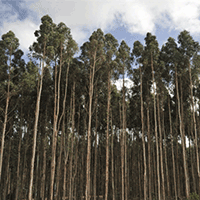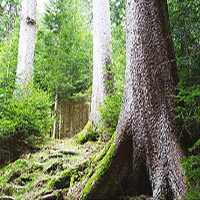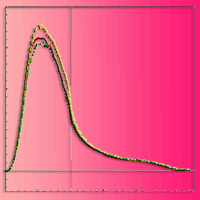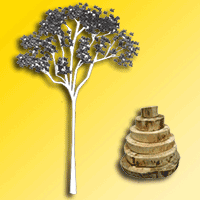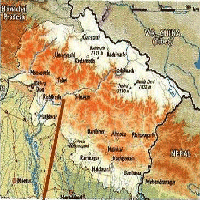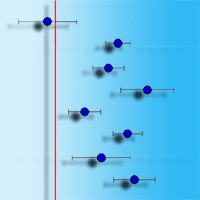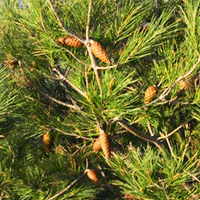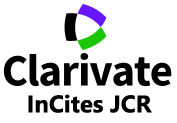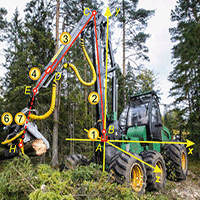
Improving the harvester functionality by optimizing the manipulator kinematic scheme
Alexander Lagerev (1) , Igor Lagerev (2), Anna Makulina (3)
iForest - Biogeosciences and Forestry, Volume 18, Issue 4, Pages 227-233 (2025)
doi: https://doi.org/10.3832/ifor4753-018
Published: Aug 26, 2025 - Copyright © 2025 SISEF
Research Articles
Abstract
To minimize the negative impact of wheeled and tracked forest vehicles on soil and vegetation, it is crucial to protect natural ecosystems during activities such as wood harvesting and tree maintenance. This study focuses on one of these measures, namely, maximizing the area of the harvester’s working zone, within which it can cut down trees without additional movement, thereby preserving soil integrity. The manipulator kinematic scheme, typical for most modern harvesters, was considered, and calculated dependencies were obtained to determine the shape and basic geometric characteristics of the working zone. A mathematical model has been developed to determine the optimal values of the lengths of the manipulator links, ensuring the maximum area of the harvester’s working zone, taking into account the necessary design and operating restrictions. Model results demonstrate the effectiveness of the design phase of harvester manipulators. When designing harvesters with a load moment in the range from 150 kN·m to 300 kN·m, optimizing the combination of link lengths in the manipulator’s kinematic scheme can increase the working zone area by up to 30%. This increase is associated with the increase in the maximum radius of the working zone, which can reach from 15% to 17%. This leads to a similar increase in the width of the strip of felled trees that can be cleared with a single pass by the harvester. A greater effect of optimizing the manipulator kinematic scheme was observed when operating harvesters in logging areas with trees of smaller average diameter. Optimizing the manipulator kinematic scheme resulted more effective in logging areas with smaller diameter trees. By reducing the number of longitudinal passes in the logging area, the negative impact of mechanized logging on the forest ecosystem can be minimized.
Keywords
Harvester, Logging, Kinematic Scheme, Working Zone, Optimization
Authors’ Info
Authors’ address
Faculty of Technology and Design, Academician IG Petrovskii Bryansk State University, Bryansk, 241036 (Russia)
Rectorat, Kuban State Technological University, Krasnodar, 350072 (Russia)
Faculty of Physics and Mathematics, Academician IG Petrovskii Bryansk State University, Bryansk, 241036 (Russia)
Corresponding author
Paper Info
Citation
Lagerev A, Lagerev I, Makulina A (2025). Improving the harvester functionality by optimizing the manipulator kinematic scheme. iForest 18: 227-233. - doi: 10.3832/ifor4753-018
Academic Editor
Rodolfo Picchio
Paper history
Received: Nov 05, 2024
Accepted: Aug 05, 2025
First online: Aug 26, 2025
Publication Date: Aug 31, 2025
Publication Time: 0.70 months
Copyright Information
© SISEF - The Italian Society of Silviculture and Forest Ecology 2025
Open Access
This article is distributed under the terms of the Creative Commons Attribution-Non Commercial 4.0 International (https://creativecommons.org/licenses/by-nc/4.0/), which permits unrestricted use, distribution, and reproduction in any medium, provided you give appropriate credit to the original author(s) and the source, provide a link to the Creative Commons license, and indicate if changes were made.
Web Metrics
Breakdown by View Type
Article Usage
Total Article Views: 2220
(from publication date up to now)
Breakdown by View Type
HTML Page Views: 617
Abstract Page Views: 794
PDF Downloads: 749
Citation/Reference Downloads: 2
XML Downloads: 58
Web Metrics
Days since publication: 94
Overall contacts: 2220
Avg. contacts per week: 165.32
Citation Metrics
Article Citations
Article citations are based on data periodically collected from the Clarivate Web of Science web site
(last update: Mar 2025)
(No citations were found up to date. Please come back later)
Publication Metrics
by Dimensions ©
Articles citing this article
List of the papers citing this article based on CrossRef Cited-by.
References
Optimization of design and power characteristics of hydraulically-driven three-section loader cranes. Journal of Engineering Science and Technology Review 12 (3): 64-72.
Gscholar
Estimating the position of the harvester head - a key step towards the precision forestry of the future? Croatian Journal of Forest Engineering 36 (2): 147-164.
Gscholar
Estimating and modeling harvester productivity in pine stands of different ages, densities and thinning intensities. Croatian Journal of Forest Engineering 37 (1): 27-36.
Gscholar
Engineering optimization: theory and practice. John Wiley and Sons, Hoboken, USA, pp. 813.
Gscholar
Innovative harvesting solutions: a step change harvesting research programme. New Zealand Journal of Forestry Science 55 (3): 4-9.
Gscholar
Springer handbook of robotics. Springer-Verlag, Berlin, Heidelberg, Germany, pp. 2227.
Gscholar
Wood harvesting machinery in the focus of bioenergy: constructive solutions, design, engineering calculation. Finnish Forest Research Institute, Joensuu, Finland, pp. 143.
Gscholar


